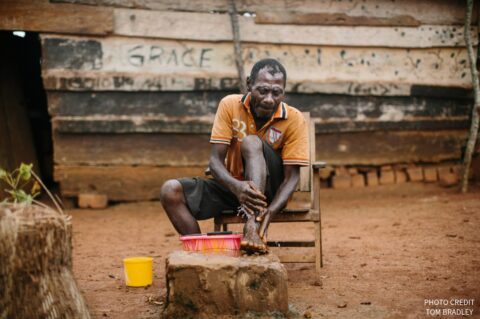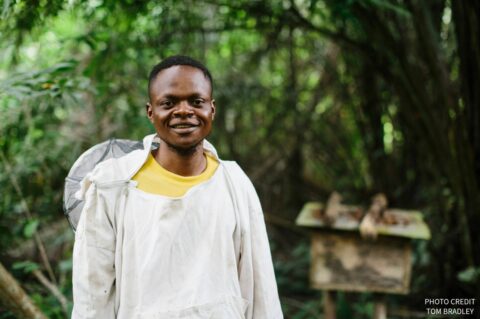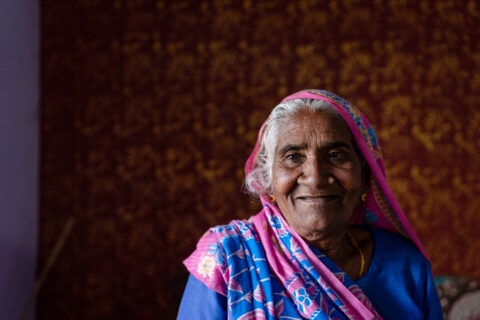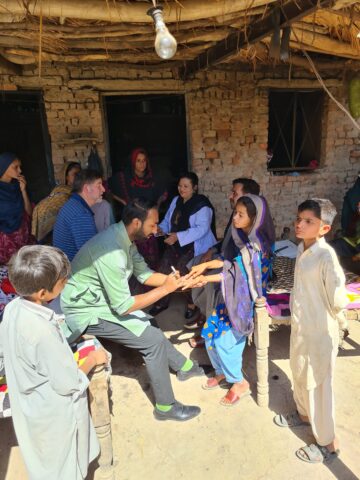
Nsimbu, 60, Kuakua
Nsimbu lives with his wife. They have 6 children, all of whom are grown up and living elsewhere. He’s a farmer and been educated to class 2.
“Five years ago I started to get wounds on my legs. I was also getting feverish around this time, though I thought that was due to malaria. I had patches covering my body.” His wife agrees with him: “In those two years I saw so many wounds, and he always had a fever.”
“I couldn’t work hard in this time, I couldn’t work fast. My wife was doing everything. The fever incapacitated me constantly.”
It was his wife who eventually told Mathos at the TLM apprentices’ workshop, and he referred him to hospital. He was diagnosed three years ago with leprosy.
“When I was diagnosed I was depressed and distraught. I was ready to drink battery acid and end my life. But the doctors told me I’d be ok and gave me hope, and that’s why I’m alive.”
“When I’d completed the MDT, I observed changes in my legs. Mathos provided me with bandages (from TLM), and gave me self-care training. I still do self-care every morning and evening.”
Nsimbu still has anaesthia on his feet and legs, though at first says he has full sensation. He clearly doesn’t, but some sensation has come back.
“I still get tired doing farm work. But I’m happy now. I accept how I am, because I’ve received a lot of advice from doctors and community leaders. Life is still hard, but I have no worries.”
“I’m very grateful to Father Placide and TLM Congo. Without them I wouldn’t be alive.”
Nsimbu has received some money for welfare. He’s used it to buy food, as well as pay some people to farm his land when he’s unable.







